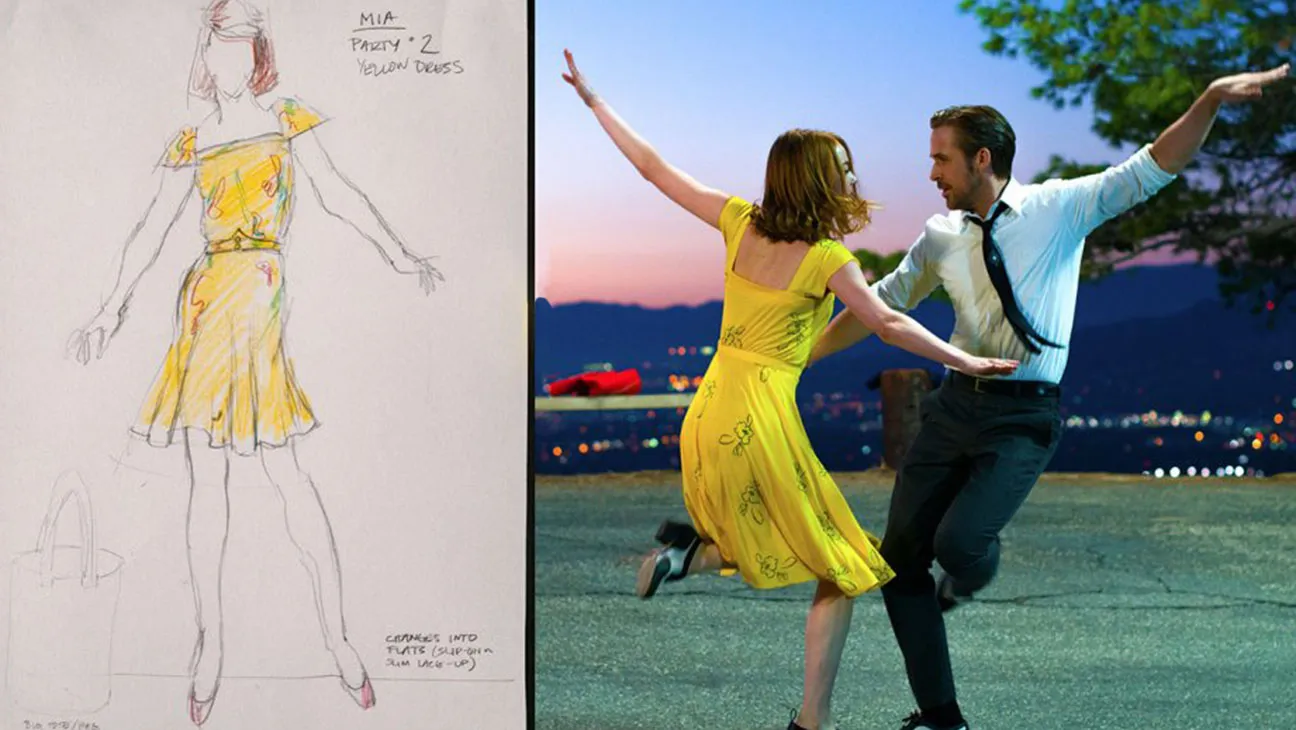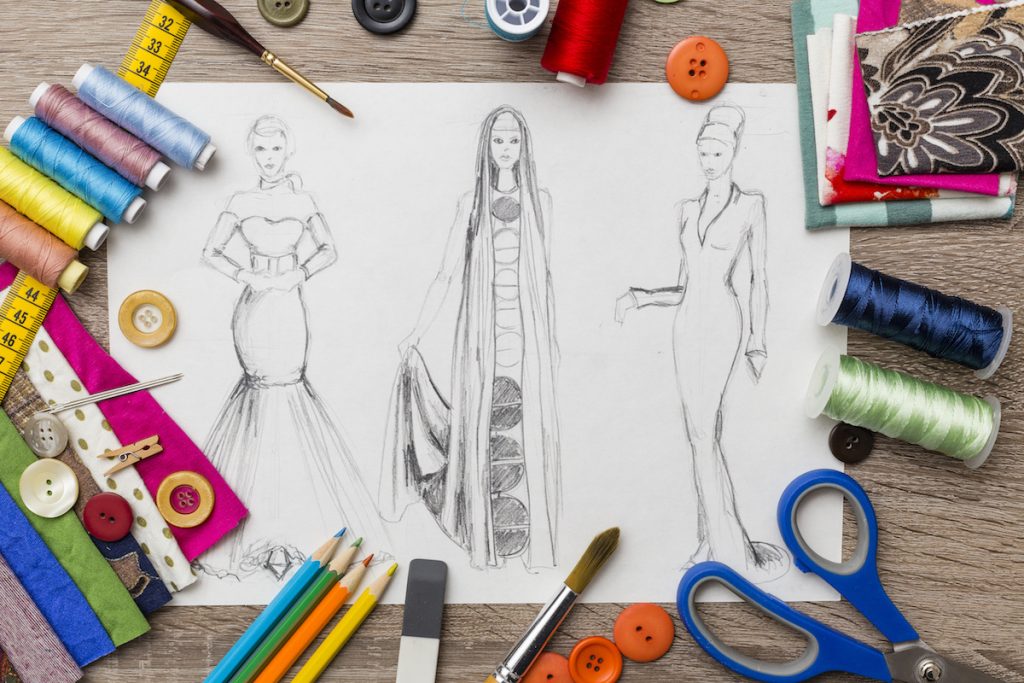While actors and directors often take center stage, the magic of a production goes far beyond their performances. Behind the scenes, a team of talented individuals breathes life into the story, and costume designers play a crucial role in this visual tapestry. But what exactly does a costume designer do? Their work goes far deeper than simply dressing the actors.
Weaving a Narrative Through Clothes
At the heart of a costume designer’s job lies storytelling. They are visual storytellers who use clothing to communicate a character’s personality, background, and journey. Imagine a historical drama. The meticulous research that goes into replicating period attire instantly transports the audience back in time. A tattered coat on a struggling protagonist speaks volumes about their social standing, while the opulent gown of a wealthy antagonist embodies their power.

Collaboration is Key
Costume designers don’t work in isolation. They collaborate extensively with the director, producers, and other members of the creative team. Early in the production process, there are in-depth discussions about the overall vision for the project. The director might share their interpretation of the script, while the producer outlines the budget constraints. The costume designer then takes this information and begins to translate the story’s essence into a visual language through clothing.
Research: The Foundation of Great Costumes
Before a single stitch is sewn, a costume designer embarks on a thorough research journey. This might involve delving into historical archives for a period piece, or studying fashion trends for a contemporary setting. They might even visit museums or attend cultural events to gain a deeper understanding of the characters’ social context. This research phase is crucial, as it provides the foundation for creating costumes that are both historically accurate and visually compelling.

From Sketchpad to Stage: The Design Process
Once the research is complete, the costume designer translates their ideas into sketches. These sketches act as a blueprint for the final costumes, showcasing the silhouette, fabric choices, and overall style. They might also create mood boards, which are collages of images and materials that capture the desired aesthetic. These visuals are then presented to the director and other collaborators for feedback and approval.
Building the Look: Sourcing and Construction
With the designs finalized, the costume designer now turns their attention to sourcing and construction. They might work with costume shops to rent or purchase existing garments, or collaborate with tailors and seamstresses to create custom pieces. The fabric selection is a crucial part of this process. The designer considers factors like texture, weight, and drape to ensure the costumes not only look good but also move comfortably with the actors’ movements.

Fittings and Alterations: Bringing the Vision to Life
Once the costumes are built or acquired, it’s time for fittings. The actors come in to try on the garments, and the costume designer makes any necessary adjustments to ensure a perfect fit. This back-and-forth process allows the designer to refine the costumes and ensure they complement the actors’ body types and performance styles.
Challenges and Problem-Solving
The world of costume design is not without its challenges. Budget constraints can force designers to get creative with their sourcing and construction methods. Time pressure can also be a factor, especially in fast-paced productions. However, a skilled costume designer is a resourceful problem-solver who can overcome these obstacles while maintaining the integrity of their vision.

The Final Act: Performance and Legacy
Opening night arrives, and the audience sees the culmination of the costume designer’s hard work. The actors, adorned in their meticulously crafted costumes, bring the characters to life. The costumes silently tell their own story, subtly influencing the audience’s perception and emotional connection to the performance. Even after the final curtain falls, the costume designer’s legacy lives on. Their work can be seen in photographs, film stills, and even museum exhibits, serving as a testament to their creativity and storytelling ability.
Dealing with time constraints and deadlines
Costume designers are masters of weaving narratives through clothing, but their artistry thrives within the harsh reality of deadlines. Here’s how they tackle time constraints and ensure their vision comes to life:
Prioritization is Key:
- Task Breakdown: Divide the costume creation process into smaller, manageable tasks. This allows for better scheduling and allocation of resources.
- Identifying Critical Pieces: Prioritize costumes that play a major role in the production. Focus on getting these key garments completed first.
- Communication is Crucial: Keep the director and producers informed of potential delays and discuss alternative solutions to meet deadlines.
Optimizing the Workflow:
- Time Blocking: Allocate specific time slots for research, sketching, sourcing materials, and fittings. This focused approach maximizes efficiency.
- Collaboration with Costume Shops: Build strong relationships with costume shops that can provide quick turnaround times or offer rental options.
- Delegation and Teamwork: For large productions, consider delegating tasks to assistants or collaborating with other costume designers to share the workload.
Resourcefulness and Problem-Solving:
- Adaptive Reuse: Explore ways to repurpose existing garments or utilize fabric remnants to create new pieces, saving time and resources.
- Thinking Outside the Box: Be open to alternative materials or construction techniques that might be faster to implement while maintaining quality.
- Contingency Plans: Always have backup plans in case of unforeseen delays in material deliveries or unexpected fitting adjustments.
Technology as an Ally:
- Digital Tools: Utilize digital design software to create sketches and mood boards. This can streamline the design process and communication with collaborators.
- Online Resources: Explore online databases for historical references or contemporary fashion trends, saving valuable research time.
- Communication Platforms: Utilize online project management tools to track progress, share updates, and collaborate with the team remotely.
By employing these strategies, costume designers can navigate the pressure of deadlines while maintaining the quality and creative integrity of their work. Remember, effective time management is an ongoing process, and constant adaptation is key to success in the fast-paced world of costume design.

Addressing potential cultural and sensitivity concerns
Here’s how we can address potential cultural and sensitivity concerns in the costume design process:
Research with Sensitivity:
- Diversity of Sources: Go beyond traditional sources and consult with cultural experts or communities the costumes represent. This ensures a more nuanced and respectful portrayal.
- Avoiding Stereotypes: Beware of relying on stereotypical depictions of cultures in clothing choices. Research diverse styles and social variations within cultures.
- Religious Significance: Be mindful of religious garments and their significance. Consult with religious leaders or cultural experts for proper representation.
Collaboration and Communication:
- Open Dialogue: Maintain open communication with actors from diverse backgrounds. Listen to their concerns and ensure the costumes feel respectful and comfortable.
- Sensitivity Training: Consider sensitivity training for the costume design team to understand cultural nuances and avoid unintentional offense.
- Inclusivity: Actively seek out costume shops and tailors who specialize in diverse styles and body types to ensure a more inclusive approach.
Respectful Representation:
- Historical Accuracy: When portraying historical cultures, strive for accuracy while remaining sensitive to potential biases in historical records.
- Modern Context: For contemporary settings, consider the social and political climate. Avoid perpetuating negative stereotypes through costume choices.
- Consultation: For particularly sensitive topics, consult with cultural sensitivity experts to ensure respectful representation.
By incorporating these steps, costume designers can create work that is not only visually stunning but also culturally sensitive and respectful.
Costume designers are the unsung storytellers of the stage and screen. Their work goes beyond mere aesthetics; it’s about using clothing as a powerful tool to illuminate character, enrich the narrative, and transport audiences to different worlds. The next time you watch a play or movie, take a moment to appreciate the artistry of the costume designer – the silent storyteller who weaves a narrative through the magic of clothes.

